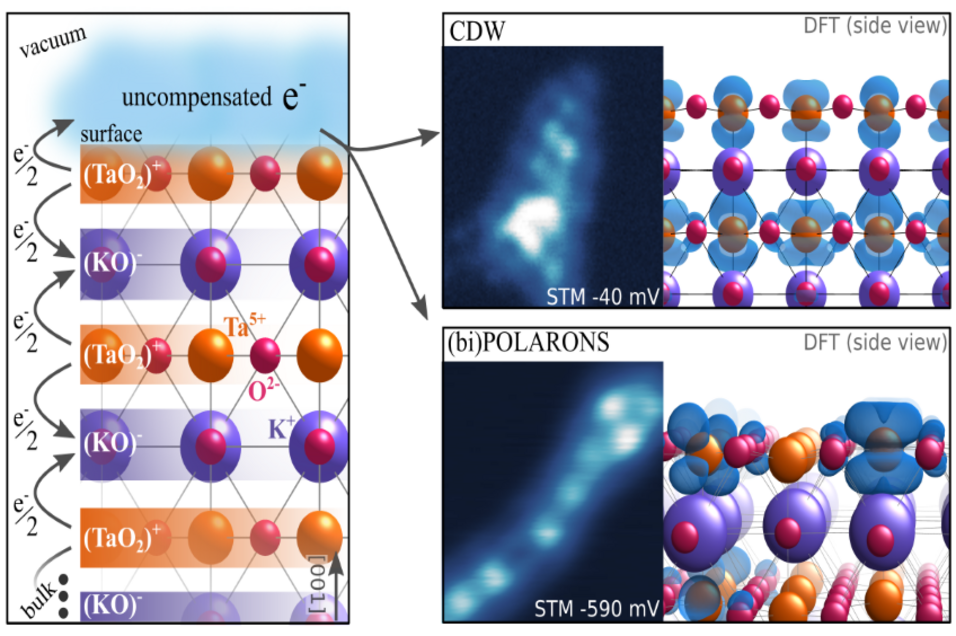In surface physics, the arrangement of atoms and the states occupied by electrons on surfaces of crystals play a central role. Indeed, they determine the properties of the surface and, in particular, the chemical reactions that can take place on it. The surface can take on the role of a catalyst and favor some reactions.
So-called polar surfaces are particularly interesting for physics. These are surfaces of certain crystals that can have free charges, i.e., electrons. Such materials are also called ferroelectrics and can retain a permanent electric field – much like permanent magnets retain a permanent magnetic field. Ferroelectrics are particularly exciting for catalysis research because the polar property opens up another possibility to specifically tune the reactions taking place on the surface.
For this purpose, the research team took a close look at the perovskite crystal KTaO3, also known as potassium tantalate. The “magnifying glass” in the researchers’ toolbox is made up of scanning tunneling microscopes (STM) on the one hand and model calculations on the other.
Atomically small terraces with the composition KO (potassium oxide) or TaO2 (tantalum dioxide) are formed on a KTaO3 crystal cleaved in vacuum. The common assumption in the scientific community so far was that the mentioned free charges form a two-dimensional electron gas on the TaO2 terrace, which is at a lower altitude by a single atomic layer. This would mean that the electrons are distributed uniformly over the surface – much like the electrons in a conventional piece of metal, only limited to two dimensions instead of three. However, the STM images taken by the team’s experimentalists already suggested that this common assumption cannot be correct: The surface structures were too diverse to be explained by a uniform distribution. Instead, the images revealed that the charges are spatially localized. These states of the electrons are called polarons, bipolarons, and charge density waves. Polarons and bipolarons can be thought of as electrons attached tightly to atoms, singly or in pairs, leading to a slight distortion of the local crystal structure.
The theorists on the team went into more detail about this in their simulations. The method used for this is called density functional theory and was developed by Walter Kohn, a Nobel Prize winner in chemistry originating from Vienna. With this approximate calculation method, the calculations, which are highly complex in themselves, are still costly but can be handled by supercomputers such as the Vienna Scientific Cluster in this case. The calculations confirmed the experimentally based conjectures: An arrangement of electrons localized as polarons, bipolarons, or charge density waves (and combinations thereof) is energetically more favorable than a two-dimensional electron gas in the TaO2 layer. The theory could also confirm the distribution of electron densities of states measured in the experiment.
The novel and surprising physical effect could be used to control the ferroelectric polarization of the crystal surface. It could also be vital for future application in catalysis. Some catalytic reactions are expected to make a valuable contribution to climate protection.
Links:

